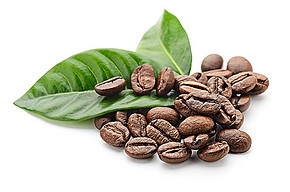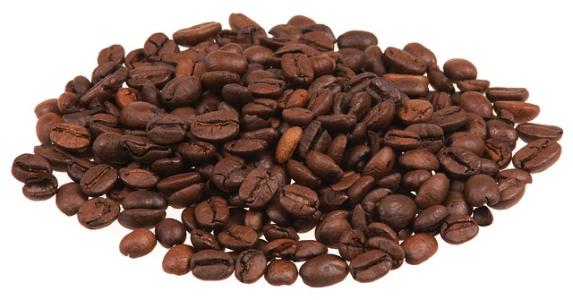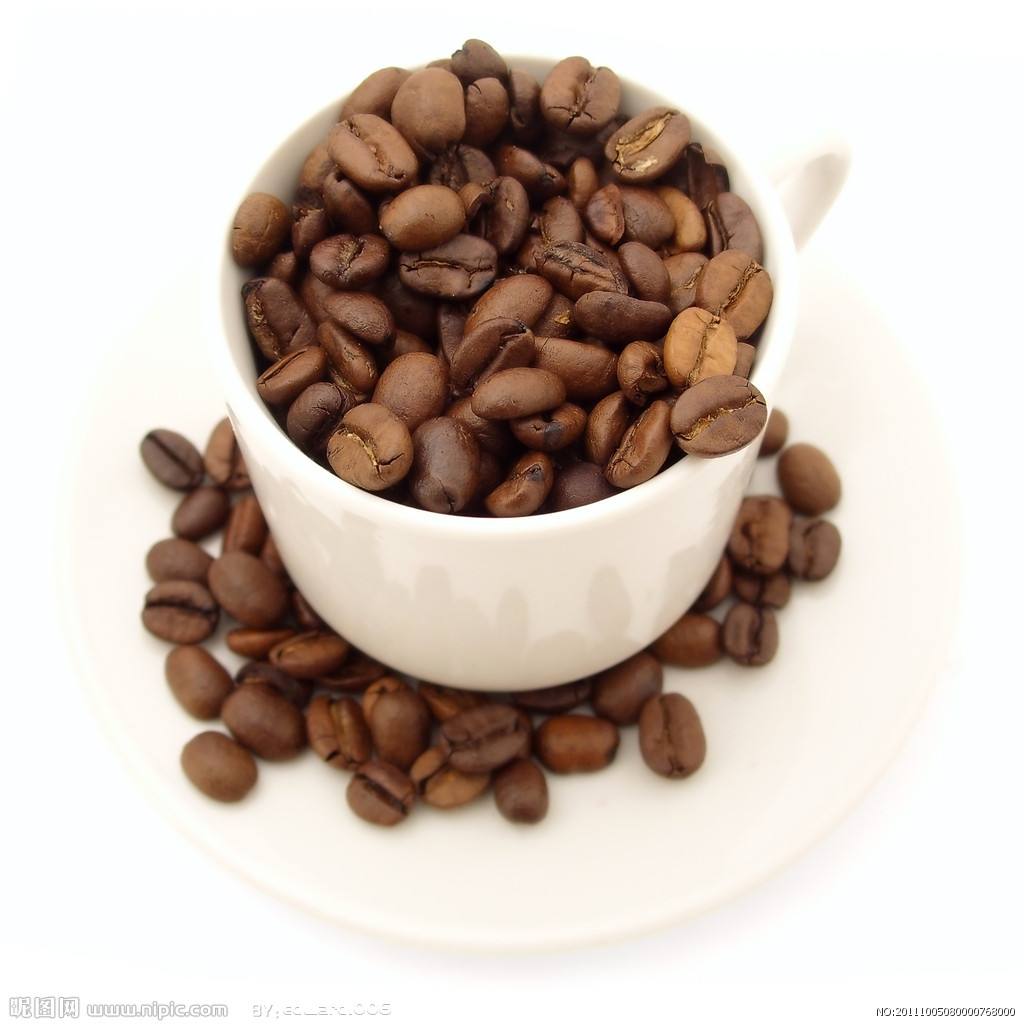Introduction of well-known representative coffee in Latin America
Follow the caf é (Wechat official account vdailycom) and found that Beautiful Cafe opened a small shop of its own.
1. Guatemala (Guatemala)
Famous representative coffee: Antigua (Antigua), Vivette Nango (Huehuetenango)
The latitude of Guatemala is about 15 degrees, bordering the Pacific Ocean on the left and the Caribbean Sea on the right. The Sierra Mountains on the Pacific side are the main coffee-growing areas in Guatemala.
Because the mountains stretch very long and the regional climate changes greatly, it has created the seven major coffee producing areas of the dangerous country. The coffee in these seven major producing areas has different flavors and characteristics. Among them, the coffee of Antigua is slightly sour, fragrant and glycolic, with a slightly volcanic carbon burning flavor, which makes Guatemalan coffee especially famous in Antigua.
Dangerous coffee belongs to Arabica, which is treated by washing. In the far northwest, there is a piece of Huehuetenango highland. Due to the elevation of more than 5000 feet, the coffee produced has the characteristics of hard texture, strong acidity and rich taste of high altitude coffee. It is also one of the most distinctive coffee in Guatemala.

two。 Costa Rica (Costa Rica)
Well-known representative coffee: Tarrazu
Like other Central American countries, coffee from Arabica is widely grown in Costa Rica. Its coffee is mainly grown in two high areas, one is the high area near the capital San Jose, and the other is the Tarrazu mountains southeast of San Jose. Because the coffee trees in Costa Rica are planted in high altitude areas, the coffee here also has a strong sour taste, and because of the lower temperature in the mountains, the coffee trees grow slowly, with a more complex and non-monotonous taste.
The coffee produced in Tarasu has a special flavor of fruit and some chocolate or stone fruit, so it is also one of the favorite coffees for coffee tasters.
3. Nicaragua (Nicaragua)
Famous representative coffee: Nicaragua (Nicaragua)
Nicaraguan coffee, which is mainly produced in the central and northern parts of the country, is characterized by shade planting and coffee beans are washed and dried in the sun. Generally speaking, Nicaraguan coffee is less distinctive, so Nicaraguan beans are often used as mixed coffee or instant coffee.
But high-quality Nicaraguan beans, such as Maragogipe, a very large coffee bean called elephant beans, are highly valued. This coffee has a well-balanced taste, without the distinct acidity that other Central American coffees often have, but it has a clear taste and excellent aroma. This round and soft texture also makes it a unique show in the more moderate evaluation of Guatemalan coffee and is loved by many people.
4. Honduras (Honduras)
Well-known representative coffee: Honduras
Honduran coffee seems strange to many coffee drinkers. For coffee production, the geographical conditions of Honduras are no less than those of its neighboring coffee-producing countries, such as Guatemala and Nicaragua.
However, in the past, Honduras was less well-known in the consumer market because it did not have strong support in the handling and transportation of raw beans. However, in recent years, Honduras has begun to change dramatically, and the emphasis on the coffee industry has slowly opened up the international popularity of Honduran coffee.
There are six main coffee producing areas in Honduras, including the five regions next to each other in the West, Santa Barbara (Santa Barbara), Copan (Copan), Ocotepeque, Lempira and La Paz, as well as El Paraiso in the southeast. Honduran coffee tastes less acidic, while caramel is more sweet.
The taste of coffee in six different producing areas is also slightly different, some slightly sour, some have a unique flavor. As it is still in the process of promoting its popularity, although the quality of coffee in Honduras is good, its price is still quite competitive. Considering the unique flavor of Honduran coffee, it is a good choice to use it as a single product or to add mixed coffee and espresso (Espresso).
5. Panama (Panama)
Famous representative coffee: Panama (Panama)
Panama is bordered by Costa Rica to the west and Colombia in South America to the east. Most of its coffee is grown in the mountains near Costa Rica to the west. Panamanian coffee is medium and uniform in flavor and texture, with a blue mountain-like temperament, so it is said that Panamanian coffee is often imitated as the high-priced Kona of Hawaii or the Blue Mountains of Jamaica. However, Panamanian coffee has always been at the middle and low price level in the consumer market, which may not have a distinctive relationship.
In recent years, Panama has also actively promoted the cause of boutique coffee and sold its high-quality coffee beans at competitive auctions. As a result, Panamanian coffee has gradually attracted the attention of the world again. Good Panamanian coffee beans are stunning for their clean, clear, bright and supple taste and medium mellowness, making them one of the most excellent coffees recognized by coffee connoisseurs.
6. El Salvador (El Salvador)
Famous representative coffee: El Salvador (El Salvador)
El Salvador, with its upland topography, is the smallest country in Central America, flanked by Guatemala and Honduras. Because there are two parallel mountains in the area, the volcanic soil is rich in minerals, making El Salvador suitable for growing coffee.
The coffee tree in El Salvador is Arabica, which is mainly divided into two species: bourbon and Pacas. Its coffee is refreshing and uniform, which is divided into three grades according to altitude, namely SHG (Strictly High Grown), SG (High Grown) and SC (Central Standard).
It is worth mentioning that El Salvador produces a hot spring coffee, named because of the use of hot spring water for washing treatment, its special and supple sour taste and sweet smell is very charming, because the low yield makes the unit price quite high, is its very characteristic coffee.
7. Mexico (Mexico)
Famous representative coffee: Mexico (Mexico)
Mexico is close to the north of the United States, and its coffee production ranks fourth in the world, mainly in the southeast adjacent to the Malavitte Nango Highlands in Guatemala.
Brother Mo, about 70% of his coffee is exported directly to the United States, which is washed and divided into three grades according to their height. Generally speaking, Mexican coffee is evaluated as moderate aroma and mild mellow. Among them, the coffee beans produced by the giant elephant bean tree Maragogipe (also known as Maragogype) are not only three times larger than the average, but also famous for their mellow and round taste.
8. Peru (Peru)
Famous representative coffee: Peru (Peru)
Peru is one of the major coffee producers in South America, and coffee is Peru's largest export of agricultural products, which has grown significantly in recent years, reaching an all-time high in 2006.
As can be seen on the map, there are Andes mountains parallel to the coast in Peru. More than 90% of Peruvian coffee is grown in the north, in valleys east of the capital Lima, and in forest areas on the slopes of the Andes.
Peruvian coffee beans have a round taste, moderate mellow, not thick not light, soft acid is one of its major characteristics, with a slightly drupe flavor. As the export volume increases and coffee lovers become familiar, more and more people have fallen in love with the mellow taste and soft sour taste of Peruvian coffee.
9. Ecuador (Ecuador)
Well-known representative coffee: Galapagos
Ecuador, which passes through the equator between Colombia and Peru, is one of the few countries in South America that produces both Arabica and robusta coffee.
In fact, Ecuador means "equator" in Spanish. Due to the use of old-fashioned traditional harvesting and handling methods, Ecuadorian coffee is not included in the list of boutique coffee, so it is generally rare and unfamiliar.
Ecuador faces the Pacific Ocean, and near the equator, about 900km off its west coast, near the equator at 90 degrees west longitude, there is also a Galapagos Island, also known as Cologne, which produces the famous Galapago coffee. In order to protect the natural ecology, the Ecuadorian government has designated the archipelago as a national park and banned the use of chemical fertilizers, pesticides and other chemical agents, so coffee in the Galapagos Islands is recognized as organic coffee.
Galapagos Islands coffee flavor is more balanced and neutral, moderately mellow, with a little obvious but pleasant acidity, with a special aroma. However, because it is rarely seen on the market, it is relatively minority, but it is extremely precious.
10. Colombia (Colombia)
Famous representative coffee: Colombia
Colombia is the world's second largest exporter of coffee, accounting for about 15% of global production. Most of its coffee trees are grown in three mountains stretching north and south, with only Arabica species.
Although its output ranking is lower than that of Brazil, the coffee beans are of good quality, rich and unique aroma, sweet in acidity and moderate bitterness, which is very suitable for single drink or mixture.
Colombian beans and Brazilian beans are the best choice of basic beans for blended coffee, but their flavor is more mellow and more fragrant than Brazilian beans. In addition to individual taste, they are also often used to blend coffee to increase the sweetness of coffee and to blend the bitterness of other coffee.
11. Brazil (Brazil)
Well-known representative coffee: Santos
Brazil is the world's largest coffee producer, ranking first in the world in terms of total output, accounting for about 1 of the world's total output. Brazil is mainly produced in the central and southern provinces.
Brazil is suitable for growing coffee, the terrain is relatively flat, coffee gardens are mostly below 1200 meters above sea level, and there is no shade from big trees. This kind of coffee bean is not a fine coffee because the raw berries are picked together at harvest. Brazilian coffee is of mediocre quality, but lacks excellent grades. Its beans are soft and obviously not resistant to heat during roasting. Santos (named after its export port Santos) is more famous among all varieties. Brazilian coffee beans are neutral and can be tasted alone (though a bit monotonous), or mixed with other kinds of coffee beans to form a comprehensive coffee, which is generally considered to be indispensable in blending.
Important Notice :
前街咖啡 FrontStreet Coffee has moved to new addredd:
FrontStreet Coffee Address: 315,Donghua East Road,GuangZhou
Tel:020 38364473
- Prev

How did coffee spread to Latin America?
Following Cafe Review (Wechat official account vdailycom) found that Beautiful Cafe opened a small shop of its own Latin America is famous for its coffee production and export volume, ranking first in the world. In 1979, Latin America produced 3.264 million tons of coffee, accounting for 65.6 percent of the world's total output, and coffee exports accounted for 2.217 million tons, accounting for about the world's total exports.
- Next

Latin American Brazilian Coffee Plantation
Following Cafe Review (Wechat official account vdailycom) found that Coffee hometown, a beautiful cafe opened its own shop, a place that left fragrance on its teeth and cheeks, filled with the smell of flowers, fruits and trees, flashing the light of sun washing, and containing the mystery of local customs and customs, opened its arms to everyone who liked coffee and looked forward to it. △ Brazilian Coffee Plantation, this one comes from coffee.
Related
- Detailed explanation of Jadeite planting Land in Panamanian Jadeite Manor introduction to the grading system of Jadeite competitive bidding, Red bid, Green bid and Rose Summer
- Story of Coffee planting in Brenka region of Costa Rica Stonehenge Manor anaerobic heavy honey treatment of flavor mouth
- What's on the barrel of Blue Mountain Coffee beans?
- Can American coffee also pull flowers? How to use hot American style to pull out a good-looking pattern?
- Can you make a cold extract with coffee beans? What is the right proportion for cold-extracted coffee formula?
- Indonesian PWN Gold Mandrine Coffee Origin Features Flavor How to Chong? Mandolin coffee is American.
- A brief introduction to the flavor characteristics of Brazilian yellow bourbon coffee beans
- What is the effect of different water quality on the flavor of cold-extracted coffee? What kind of water is best for brewing coffee?
- Why do you think of Rose Summer whenever you mention Panamanian coffee?
- Introduction to the characteristics of authentic blue mountain coffee bean producing areas? What is the CIB Coffee Authority in Jamaica?

